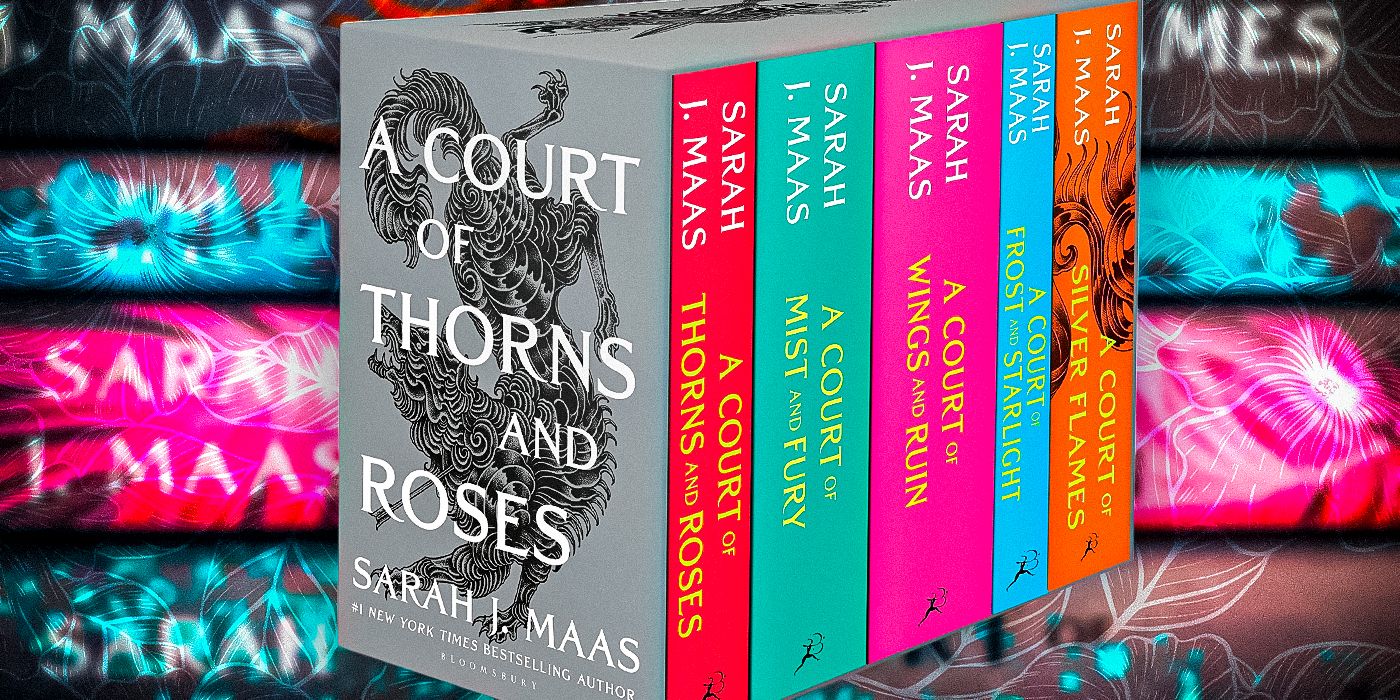Amarantha's Riddle Answer & Real Meaning In A Court Of Thorns And Roses Explained
Summary Feyre saves Tamlin and Prythian by solving Amarantha's riddle in the first A Court of Thorns and Roses book.
Love is a central theme in ACOTAR, and Amarantha's riddle hints at the darker side of unrequited love leading to her downfall.
Amarantha's riddle holds a deeper meaning for both herself and Feyre, with the latter proving herself by solving it.
A Court of Thorns and Roses ends with Feyre saving Tamlin and Prythian from the villain Amarantha, and Sarah J. Maas' heroine frees them by solving the faerie queen's riddle. When Amarantha takes Tamlin and the other High Lords Under the Mountain, it seems like they'll never escape her clutches. Feyre ventures Under the Mountain to help Tamlin, and she faces a series of tests in order to save the man she loves. Amarantha throws Feyre into dangerous situations, even pitting her against a Wyrm, and she also takes any opportunity to mock her illiteracy and mortality.
This comes back to bite ACOTAR's villain later on, as Feyre eventually liberates Tamlin and Prythian by solving a riddle. Amarantha tells Feyre from the very beginning that she can immediately free them if she pieces together her puzzle — and it's clear that the faerie queen doesn't believe Feyre is capable of it. Feyre proves her wrong, solving the riddle just as she's about to die. Fortunately, her success saves her own life and Prythian. It also ensures that Amarantha gets her comeuppance. But Amarantha's riddle has a deeper meaning in ACOTAR, bringing the narrative together nicely.
Related 10 Books To Read If You Love A Court Of Thorns & Roses Those who love Sarah J. Maas’ A Court of Thorns & Roses books may be looking for something similar, especially while they wait for new content.
Amarantha's Riddle & Answer In ACOTAR Explained
It Makes Sense That Sarah J. Maas Brings The Story Back To Love
Amarantha's riddle in A Court of Thorns and Roses is a bit cryptic, painting a picture of something that can be a blessing or a "difficult beast to defeat." Various lines of the villain's riddle contradict each other in this way, and Feyre eventually realizes that this is because she's referring to "love." Depending on the circumstances, love can be joyful or painful — and despite the latter, it's something that people still spend their lives seeking. ACOTAR's riddle alludes to all of this, with the full thing reading as follows:
There are those who seek me a lifetime but never we meet, And those I kiss but who trample me beneath ungrateful feet. At times I seem to favor the clever and the fair, But I bless all those who are brave enough to dare. By large, my ministrations are soft-handed and sweet, But scorned, I become a difficult beast to defeat. For though each of my strikes lands a powerful blow, When I kill, I do it slow…
With love being a central theme in Maas' ACOTAR books, it makes sense that Amarantha's riddle would circle back to it. And despite this answer fitting every line of the villain's puzzle, it's easy to see how Feyre could miss it. Lines about killing make the answer seem more dangerous or tangible. Love can certainly get someone killed — or even cause enough pain to feel deadly — but it's hardly the first thing that comes to mind after such a statement. Still, the darker parts of Amarantha's riddle serve a purpose: they hold a deeper meaning for her character.
How The Riddle Hides A Deeper Meaning For Amarantha
Amarantha's Unrequited Love & Obsession Get Her Killed In ACOTAR
Amarantha in A Court of Thorns and Roses by MFTFernandez
Just as the ending of ACOTAR is obvious from Tamlin's name, Amarantha's fate is teased in her own riddle. A Court of Thorns & Roses' villain is motivated by power, but she's also desperate for Tamlin's love — and very bitter that she can't seem to obtain it. Amarantha's treatment of Feyre stems from her obsession with Tamlin, and her refusal to accept that her love is unrequited is the reason for her downfall. The riddle's use of words like "scorned" and "ungrateful" isn't coincidental. It paints a picture of the person who's dictating it, even if she doesn't realize this.
ACOTAR's villain dies due to the dark side of her love, and her riddle sets this up perfectly.
Amarantha also believes that the "strikes" in the riddle apply to Feyre's love for Tamlin, suggesting it will beat her down until she perishes. However, these lines speak more accurately of Amarantha's situation. Although she holds the power for much of A Court of Thorns and Roses, the villain is clearly growing increasingly frustrated with Tamlin's rejection. And when Tamlin finally gets free, he takes her life for what she's done. ACOTAR's villain dies due to the dark side of her love, and her riddle sets this up perfectly.
How Amarantha's Riddle Also Has Meaning For Feyre
Art by @foxyfanart
Amarantha's riddle describes her own situation, but it also holds a deeper meaning for Feyre. It's no wonder the villain comes up with this particular puzzle when looking at her own circumstances and those of her opponent. Amarantha doubts Feyre's ability to work out a riddle, but she also doesn't think that Feyre truly loves Tamlin — not enough to work out the meaning of her words. She underestimates how much Tamlin and Feyre care for one another, refusing to acknowledge that Feyre is "the clever and the fair" heroine referenced in the riddle.
Amarantha doubts Feyre's ability to work out a riddle, but she also doesn't think that Feyre truly loves Tamlin — not enough to work out the meaning of her words.
By facing Amarantha's challenges and solving her mystery, Feyre proves that she's "brave enough to dare." The villain would never have given her the riddle if she'd realized how far Feyre was willing to go for love. Feyre proves herself in many ways throughout A Court of Thorns and Roses, but this test is perhaps the most telling when it comes to her character. A Court of Mist and Fury may alter her feelings for Tamlin, but they leave no room for doubt in the first book.











COMMENTS